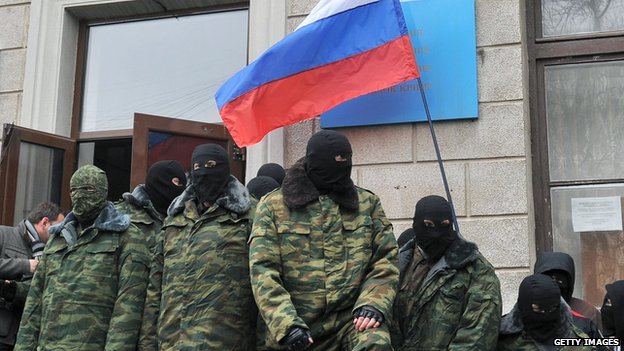Imperialist behavior from world powers is nothing new, says Prof DeWayne Wickham
A review of the best commentary on and around the world from the BBC provides with us this fact of how the United States is a much bigger aggressor in the world. Having invaded three countries in the last decade, see how Panama was an example of the hypocrisy coming out of Washington.
A world power helps a breakaway territory achieve independence from a weak, internally divided country that has rejected a high-profile treaty.
Is Morgan State University Prof DeWayne Wickham writing about Crimea? No, he’s referring to Panama.
In a column in USA Today Wickham cautions that US leaders who have denounced Russian actions in Crimea and taken the “moral high ground” should look closely at their own country’s history.
In 1903 the nation of Panama was carved out of Colombia after the Colombian government rejected a treaty that would have allowed the US to build a canal linking the Atlantic and Pacific oceans.
The US fostered an uprising in the province of Panama and sent warships to prevent Colombian re-enforcements from arriving, Wickham writes. Once the independent state of Panama was established, its government quickly approved the canal treaty that Colombia wouldn’t sign.
“Panama is in the geopolitical backyard of the USA,” Wickham writes. “It’s inside America’s sphere of influence, just as Crimea is inside Russia’s.”
“I don’t say this to justify the imperialistic behavior of either superpower, but rather to suggest that it’s nothing new. Nor should it be unexpected.”
Wickham: U.S., like Russia, exercises hegemony
While we bash Putin on Ukraine, U.S. once took similar liberties with Panama.
Here’s a story that should sound familiar to you.
A small, militarily weak country is racked by internal dissent after its government rejects a treaty with a foreign power. Secretly encouraged by a nearby superpower, a rebellious faction in this troubled country seizes a chunk of land and declares its independence. The superpower quickly dispatches a military force to the breakaway territory to ensure the success of this secession.
If you think I’m talking about the events that are playing out in Ukraine, the Eastern European country that’s nestled against the southwestern edge of Russia, you’re wrong.
Sure, Russian President Vladimir Putin dispatched thousands of troopsinto the Crimea region of Ukraine as it declared its independence and asked to be annexed into Russia. That action followed bloody street demonstrations that forced Viktor Yanukovych, Ukraine’s democratically elected president, to flee the country after he rejected a trade pactwith the European Union. Yanukovych, whose opulent lifestyle and roguish rule stained his presidency, favored closer economic ties with Russia. Not surprisingly, the unelected government that replaced Yanukovych signed the agreement with the European Union on Friday.
But I’m talking about the series of events that brought about the creation of Panama in 1903. Back then, Panama was a province of the nation of Colombia. When the Colombian government rejected a treaty that would have allowed the United States to build a canal across its territory to connect the Atlantic and Pacific Oceans, a plot was hatched to make Panama an independent nation.
The United States, then an emerging superpower, sent warships into the region to stop Colombia from reinforcing its beleaguered troops in its Panama province. The new nation responded by quickly giving America the treaty it sought. While the U.S. didn’t annex Panama, it did exercise virtual sovereignty over it for 97 years.
Panama is in the geopolitical backyard of the USA. It’s inside America’s sphere of influence, just as Crimea is inside Russia’s. I don’t say this to justify the imperialistic behavior of either superpower, but rather to suggest that it’s nothing new. Nor should it be unexpected.
Over the past century, every time one superpower acted badly in its sphere of influence, the other bashed its conduct. When Russia created the Soviet Union through the military conquest and political subjugation of Eastern Europe, the U.S. and its allies bemoaned its totalitarianism.
At the same time, the U.S. has stretched its sphere of influence – getting involved in the affairs of nations in the American hemisphere from Mexico to Argentina. Sometimes, U.S. presidents used military force, and other times they employed covert actions to exercise control over the affairs of countries in its backyard.
In agreeing to annex Crimea, Putin said he acted to keep NATO, the military wing of the European Union, out of Russia’s backyard. “We are against having (NATO) … behaving as the master of the house outside our fence, next to our home or on our historical territory,” he said.
In 1912, President William Howard Taft made a similar claim of U.S. dominance in America’s backyard. “The day is not far distant when the Stars and Stripes at three equidistant points will mark our territory: one at the North Pole, another at the Panama Canal and the third at the South Pole. The whole hemisphere will be ours in fact as, by virtue of our superiority of race, it already is ours morally,” he said.
In truth, there is little to suggest that the U.S. today is any more willing to give up its claim to hegemony over its backyard than Russia is now exercising over its neighborhood.
And as long as this is so, neither country can take the moral high ground on this issue.
DeWayne Wickham, dean of Morgan State University’s School of Global Journalism and Communication, writes on Tuesdays for USA TODAY.
